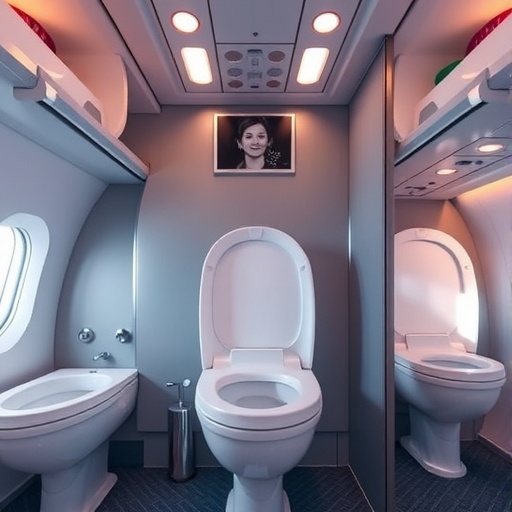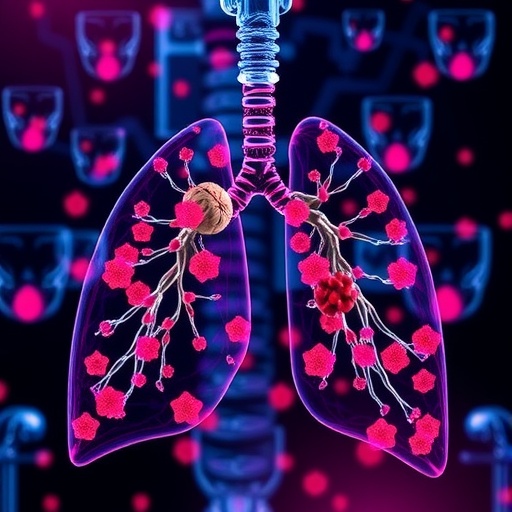
In the relentless global battle against antimicrobial resistance (AMR), a burgeoning “silent” pandemic that threatens to eclipse cancer as a leading cause of death by 2050, researchers are pioneering an innovative surveillance tool: aircraft wastewater monitoring. Scientists from Australia’s national science agency, CSIRO, in collaboration with international partners including Xiamen University, the University of South Australia, and Michigan Technological University, have unveiled a groundbreaking study that leverages the genetic material found in lavatory wastewater from airplanes to track the movement and evolution of AMR superbugs across continents. This novel approach harnesses the potential of an overlooked yet valuable data source to detect high-priority pathogens and antimicrobial resistance genes (ARGs) before they establish footholds in new regions.
This pioneering study meticulously analyzed wastewater samples collected from the toilets of 44 international flights landing in Australia, traversing nine countries spanning Asia, Europe, the Middle East, and Africa. Through sophisticated molecular and genomic techniques, the research team identified nine critical superbug strains, many notorious for hospital-acquired infections and multi-drug resistance. Remarkably, five of these superbugs were present in every single sample analyzed, illuminating their pervasive distribution among international travelers regardless of origin. Particularly alarming was the detection of a gene conferring resistance to last-resort antibiotics—found on 17 separate flights but completely absent in Australia’s urban wastewater contemporaneously—signaling the international introduction of potentially untreatable bacterial threats via air travel.
Air travel has long been recognized as a catalyst for the rapid transcontinental spread of infectious diseases such as tuberculosis, influenza, and SARS-CoV-2. However, the implications for the dissemination of AMR have been underexplored until now. Dr. Warish Ahmed, principal research scientist at CSIRO and senior author of the study, emphasizes that “aircraft wastewater captures microbial signatures from passengers across different continents, offering a non-invasive, cost-effective way to monitor threats like AMR.” This approach circumvents many limitations of traditional surveillance methods, such as the need for direct sampling from individuals or healthcare settings, and provides a real-time community snapshot of global microbial ecology influenced by human mobility.
.adsslot_KS04ailpbW{width:728px !important;height:90px !important;}
@media(max-width:1199px){ .adsslot_KS04ailpbW{width:468px !important;height:60px !important;}
}
@media(max-width:767px){ .adsslot_KS04ailpbW{width:320px !important;height:50px !important;}
}
ADVERTISEMENT
Geographical disparities in ARG prevalence were evident in the study’s findings, underscoring the influence of regional antibiotic usage, sanitation practices, and public health infrastructures on the AMR landscape. Flights originating from India exhibited notably higher concentrations of antibiotic resistance genes compared to those from Europe and the United Kingdom, which reported comparatively lower levels. Professor Nicholas Ashbolt of the University of South Australia highlights that these variations “could reflect differences in antibiotic consumption, water sanitation quality, population density, and the stringency of public health policies across countries.” Such insights not only illuminate the dynamic and uneven nature of AMR spread but also emphasize the need for tailored intervention strategies.
A critical aspect of this research involved understanding the stability of genetic material in aircraft lavatory wastewater, particularly in the presence of potent disinfectants routinely employed in airplane toilets. The scientists demonstrated that nucleic acids – the molecular backbone of ARGs and pathogen genomes – remain intact and detectable for up to 24 hours despite harsh chemical exposure. This resilience validates the reliability of aircraft wastewater sampling as a surveillance medium, as it ensures that detected resistance genes reflect recent carriage by passengers rather than residual environmental contamination or degradation.
The urgency of developing innovative surveillance tools is underscored by projections estimating that AMR could claim more than 39 million lives globally by 2050, representing an unprecedented public health crisis. Monitoring the molecular signatures found in aircraft wastewater offers a promising early-warning system capable of alerting health authorities to emerging superbug threats before they infiltrate local communities. “International travel is one of the major drivers of AMR spread,” explains Dr. Yawen Liu, a visiting scientist from Xiamen University and lead author on the paper. “By integrating aircraft wastewater surveillance into public health monitoring frameworks, we have the potential to intervene proactively and contain resistance hotspots.”
The study builds on CSIRO’s prior research demonstrating the feasibility of wastewater surveillance for detecting human viral pathogens. For instance, during the COVID-19 pandemic, wastewater samples from long-haul repatriation flights successfully identified SARS-CoV-2 viral RNA, providing a non-invasive methodology for tracking viral introductions into Australia. These precedents reinforce the viability of sampling aircraft wastewater to monitor bacterial threats, expanding the scope of wastewater epidemiology to encompass a broader array of infectious agents including those with antimicrobial resistance.
Despite the study’s significant achievements, the authors caution that samples were collected during the unique context of COVID-19 repatriation flights, potentially affecting passenger demographics and thus microbial signatures. However, they assert this proof-of-concept framework can be seamlessly adapted to regular international flight monitoring, positioning it as a sustainable and scalable surveillance strategy in the post-pandemic era. By leveraging routinely collected wastewater from aircraft, global health agencies could implement continuous real-time monitoring of the movement and evolution of AMR pathogens.
Incorporating aircraft wastewater surveillance into existing public health systems could revolutionize how we anticipate and respond to emergent microbial threats. Unlike passenger screening and travel restrictions, which are resource-intensive and sometimes intrusive, wastewater analysis is low-cost, does not infringe on individual privacy, and offers a holistic overview of the microbial burden carried by air travelers. This multi-faceted surveillance aligns with a One Health approach, recognizing the interconnectedness of human, animal, and environmental health in battling AMR.
The implications of these findings extend beyond technical innovation; they resonate with urgent policy considerations and global health priorities. As resistance genes migrate undetected across borders, national and international agencies face mounting challenges in containing superbugs that can render existing antibiotics ineffective. The CSIRO-led study paves the way for integrating molecular epidemiology with traditional surveillance, fostering a paradigm shift in anticipating and mitigating the silent spread of antimicrobial resistance through the arteries of global mobility.
In conclusion, converting aircraft toilets from mere waste disposal units into sophisticated biosurveillance hubs epitomizes the fusion of cutting-edge science with practical public health applications. This emerging strategy offers a vital, timely opportunity to enhance our defenses against one of the greatest threats facing modern medicine. As Dr. Ahmed aptly states, “We now have the tools to turn aircraft toilets into an early-warning disease system to better manage public health,” underscoring a future where untapped environmental reservoirs illuminate the path to safer, healthier societies worldwide.
Subject of Research: Antimicrobial resistance surveillance using aircraft wastewater
Article Title: Aircraft lavatory wastewater surveillance for movement of antimicrobial resistance genes: a proof-of-concept study
News Publication Date: 28-May-2025
Web References:
– https://journals.asm.org/doi/10.1128/spectrum.00569-25
– https://www.csiro.au/en/
– https://en.xmu.edu.cn/
– https://www.unisa.edu.au/
– https://www.mtu.edu/
– http://www.youtube.com/watch?v=YojENbNCvE4
References:
– Aircraft lavatory wastewater surveillance for movement of antimicrobial resistance genes: a proof-of-concept study. Microbiology Spectrum. DOI: 10.1128/spectrum.00569-25
– Previous work on SARS-CoV-2 detection in aircraft wastewater via: https://doi.org/10.1016/j.envint.2021.106938
Image Credits: CSIRO
Keywords: Antibiotic resistance, Drug resistance, Drug studies, Pharmacology
Tags: aircraft wastewater monitoringAMR superbugs evolutionantimicrobial resistance trackingCSIRO antimicrobial resistance studygenetic material from aircraft toiletsglobal superbugs surveillanceinternational flight health riskslavatory wastewater analysismulti-drug resistant infectionsnovel surveillance tools for AMRpathogen detection in wastewaterpathogen spread among travelers





